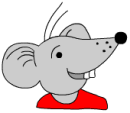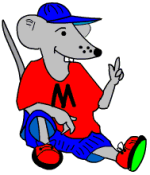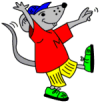 One of the most important concepts for children to understand in the early years is the relationship between addition and subtraction. Given one set of facts they should be able to deduce several other facts.
One of the most important concepts for children to understand in the early years is the relationship between addition and subtraction. Given one set of facts they should be able to deduce several other facts.
For example:
If 40 + 30 = 70 then:
30 + 40 = 70
and
70 – 40 = 30
and
70 – 30 = 40.
These two free worksheets look at this relationship.
Free Y4 maths worksheets: relate addition and subtraction (pg 1)
Free Y4 maths worksheets: relate addition and subtraction (pg 2)
 Both these free worksheets look at questions which involve adding on from one number to make another. In this case they are all adding on from a 3-digit number to the next whole hundred. Again, there is more than one way to do these. As an example look at the question:
Both these free worksheets look at questions which involve adding on from one number to make another. In this case they are all adding on from a 3-digit number to the next whole hundred. Again, there is more than one way to do these. As an example look at the question: A good understanding of place value is crucial for successful mental arithmetic and progress with written methods of the four rules. The value of a digit depends on its place in the number. For example: the 2 in 1 234 is worth 200 whilst the 2 in 4 321 is worth only 20. Our whole number system is based around this idea but don’t be surprised if your children find it difficult – many do! It seems quite an old fashioned idea to place the letters HTU to stand for hundreds, tens and units, above a number or sum, but it does help with this understanding and in reading numbers out loud.
A good understanding of place value is crucial for successful mental arithmetic and progress with written methods of the four rules. The value of a digit depends on its place in the number. For example: the 2 in 1 234 is worth 200 whilst the 2 in 4 321 is worth only 20. Our whole number system is based around this idea but don’t be surprised if your children find it difficult – many do! It seems quite an old fashioned idea to place the letters HTU to stand for hundreds, tens and units, above a number or sum, but it does help with this understanding and in reading numbers out loud.  Plenty of progress is expected with data handling during Stage 4. By the end of the year children should have a good understanding of, and be able to spell, these words:
Plenty of progress is expected with data handling during Stage 4. By the end of the year children should have a good understanding of, and be able to spell, these words: The metric system is so easy to understand. Take length for example: no 12 inches in a foot, 3 feet in a yard or 1760 yards in a mile. It’s all tens, hundreds and thousands! By Stage 4 (8/9 yrs old) children should know the standard units of measurement for length, including the abbreviations.
The metric system is so easy to understand. Take length for example: no 12 inches in a foot, 3 feet in a yard or 1760 yards in a mile. It’s all tens, hundreds and thousands! By Stage 4 (8/9 yrs old) children should know the standard units of measurement for length, including the abbreviations. Those tricky 3D shape names! By year 4 children should be familiar with a number of 3D shapes, including,
Those tricky 3D shape names! By year 4 children should be familiar with a number of 3D shapes, including,